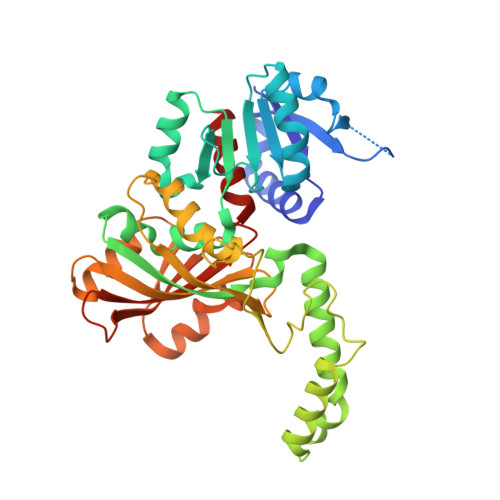Structural basis for discrimination between oxyanion substrates or inhibitors in aspartate-beta-semialdehyde dehydrogenase.
Faehnle, C.R., Blanco, J., Viola, R.E.(2004) Acta Crystallogr D Biol Crystallogr 60: 2320-2324
- PubMed: 15583380
- DOI: https://doi.org/10.1107/S0907444904026411
- Primary Citation of Related Structures:
1TA4, 1TB4 - PubMed Abstract:
The reversible dephosphorylation of beta-aspartyl phosphate to L-aspartate-beta-semialdehyde (ASA) in the aspartate biosynthetic pathway is catalyzed by aspartate-beta-semialdehyde dehydrogenase (ASADH). The phosphate that is present to activate the aspartate carboxyl group is held in a separate and distinct binding site once removed and prior to its release from the enzyme. This site had been shown to be selective for tetrahedral oxyanions, with several competitive inhibitors and alternative substrates previously identified for the reverse reaction. Structural studies have now shown that the most potent oxyanion inhibitor (periodate) and a good alternative substrate (arsenate) each occupy the same catalytic phosphate-binding site. However, a rotation of a threonine side chain (Thr137) in the periodate complex disrupts an important hydrogen-bonding interaction with an active-site glutamate (Glu243) that participates in substrate orientation. This subtle change appears to be the difference between a substrate and an inhibitor of this enzyme.
- Department of Chemistry, University of Toledo, Ohio 43606, USA.
Organizational Affiliation:

















